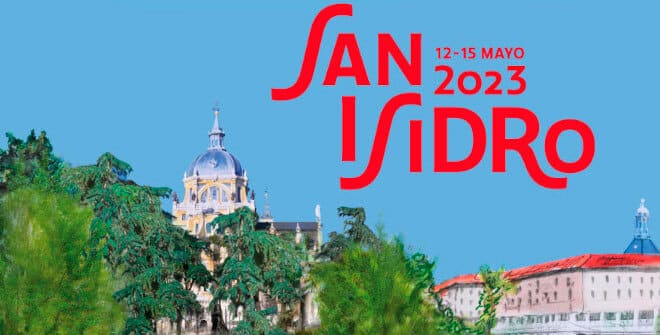If you are studying Spanish in Madrid or working for a while, there are some events you should not miss. This is the case of the San Isidro festivities.
This is one of the most traditional festivities of the city. It is a party typical of Madrid, which is only celebrated in the capital.
Origin of the San Isidro festivities
he Mozarabic Madrid of the eleventh century had a young man who was a ditch-digger, a ditch-digger, a farmer, son of Pedro and Inés, who lived in the area of San Andrés, which today is the neighborhood of La Latina. Castizo from the cradle.
The young Isidro traveled to Torrelaguna where he met his wife, María Toribia, who would also become a saint and known as María de la Cabeza. And it was in old age when Isidro, who found water where no one else did, became something more for everyone. In the Codex of San Isidro only five of his miracles are detailed, although other books speak of more than 400. San Isidro was not beatified until the seventeenth century, and what has come down to us is a mixture of legend and history.
Isidro was born around the year 1082, shortly before Madrid passed into Christian hands, and he was born in the Muslim Mayrit. A farmer, like everyone else, he made a living as best he could. His knowledge of the land, the way to find water, even other "miracles" related to the families, gave him all his fame.
San Isidro is important for his miracles related to water at a time when the land, more so than now, was key to survival. At the time, Muslims settled in the center of the plateau for its abundant; the Visigoths already documented the huge aquifer that runs through the subsoil of Madrid.
The party at the present time
Currently, the feast of St. Isidro is celebrated on May 15th, because it is the date on which the body of St. Isidore was transferred to the Church of San Andrés, where he ended up resting on the main altar of the Collegiate Church of San Isidro.
This day is a holiday in Madrid and no work is done, although it is celebrated for several days (between 11 and 15 approximately). It is the patron saint of the city, although the festivities are concentrated around what is called "la Pradera de San Isidro". It starts in a street called "Paseo del quince de mayo", in honor of the big day of the festivity.
During these days there are concerts, traditional sweets are eaten, and the chotis (a popular dance from Madrid) is danced with a barrel organ (a traditional instrument).
And, in general, there is a very fun atmosphere, attended by many Madrileños and that if you are living in Madrid, you should come to know.


